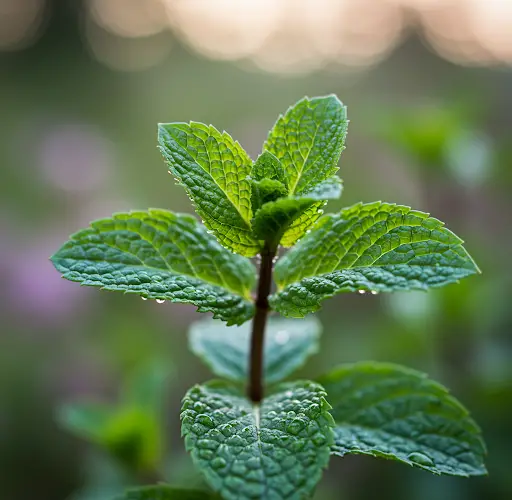If you’ve ever dreamed of growing your own herbs at home but felt limited by space, mint is the perfect place to start. It’s incredibly easy to grow, thrives in containers, and can be harvested continuously. Whether you live in an apartment or have no outdoor garden at all, you can enjoy fresh, aromatic mint right from your windowsill, balcony, or even kitchen counter.
Mint is not only a refreshing addition to drinks and meals, but it also has many health benefits. Rich in antioxidants and great for digestion, mint can be used in teas, smoothies, salads, and homemade remedies. Best of all—it’s very forgiving and perfect for beginners.
Why Mint Is Ideal for Small Spaces
Mint is a hardy perennial herb that adapts well to containers and doesn’t require a lot of maintenance. It grows quickly, spreads fast, and regrows after each harvest. Growing mint in containers is actually preferable to planting it in the ground, as it can be invasive in garden beds.
Benefits of growing mint at home:
-
Requires very little space
-
Can be grown indoors or outdoors
-
Doesn’t need constant care
-
Easy to propagate from cuttings
-
Offers year-round harvests with proper care
Materials You’ll Need
To get started, gather the following:
-
A medium-sized plastic or clay pot (at least 6–8 inches deep)
-
Fresh mint cuttings or seedlings
-
Well-draining potting mix (preferably one with compost)
-
A sunny location (a windowsill or balcony with 4–6 hours of sunlight per day)
-
A spray bottle or watering can
Optional: a saucer or tray to catch excess water under the pot if you’re growing indoors.
How to Grow Mint from Cuttings
Mint is one of the easiest herbs to propagate from cuttings. If you don’t already have a mint plant, you can start with store-bought stems.
Step 1: Prepare the Cuttings
Choose healthy mint stems (4–6 inches long). Remove the leaves from the bottom half of the stem.
Step 2: Root the Cuttings
Place the cuttings in a glass of water, ensuring the leafless part is submerged. Leave the glass near a bright window. After 5–7 days, you’ll start to see roots forming.
Step 3: Plant in Containers
Once the roots are about an inch long, transfer the cuttings into your container filled with moist potting mix. Gently press the soil around the base and water lightly.
How to Care for Your Mint Plant
Mint is low-maintenance but benefits from consistent attention. Here’s how to keep it healthy and productive:
1. Sunlight
Mint loves light but not harsh, direct sun all day. 4–6 hours of morning or filtered sunlight is ideal. If you’re growing indoors, place it near a bright window or under grow lights.
2. Watering
Mint likes moist (but not soggy) soil. Water when the top inch of soil feels dry. In hot weather, it may need watering every day. Indoors, 2–3 times a week is usually enough.
3. Pruning
Regular pruning encourages bushy growth and prevents the plant from getting leggy. Pinch off the tips every week or so, especially before it flowers. Once mint flowers, its flavor diminishes, so remove flower buds when they appear.
Harvesting Mint the Right Way
The more you harvest, the more mint grows—just be careful not to cut back more than one-third of the plant at a time.
How to harvest:
-
Use clean scissors or pinch off sprigs with your fingers.
-
Always leave a few leaves on each stem to allow regrowth.
-
Best harvested in the morning for maximum flavor and essential oils.
You can use harvested mint immediately or dry it for later use. To dry, hang small bunches upside down in a dry, airy spot or use a dehydrator. Store dried mint in a sealed jar away from light and heat.
Growing Mint Indoors Year-Round
One of the greatest advantages of growing mint in containers is the ability to move it indoors during cold months. Keep it near a sunny window and continue watering moderately. Even in winter, your mint will produce enough fresh leaves for teas and dishes if it gets enough light.
For better indoor results, rotate the pot occasionally so all sides receive light and the plant grows evenly.
Common Problems (and Easy Fixes)
-
Leggy growth – Means your mint needs more light. Move it to a brighter spot.
-
Yellowing leaves – Often a sign of overwatering. Let the soil dry slightly between watering.
-
Pests like aphids or spider mites – Spray the plant with a gentle soap solution or neem oil.
Final Thoughts
Growing mint at home is one of the easiest and most rewarding gardening experiences, especially for beginners with limited space. A few plastic containers and a sunny window are all it takes to start harvesting your own fresh herbs. With minimal care, your mint plant will thrive and provide you with fragrant leaves for months—and even years—to come.
Whether you want to add fresh flavor to your meals, brew soothing herbal tea, or simply enjoy the satisfaction of growing your own food, mint is the perfect herb to start your home gardening journey.



